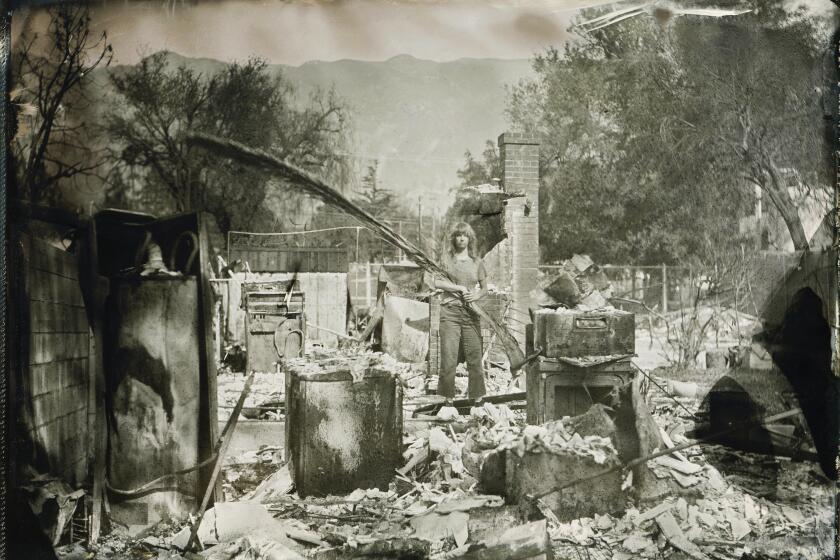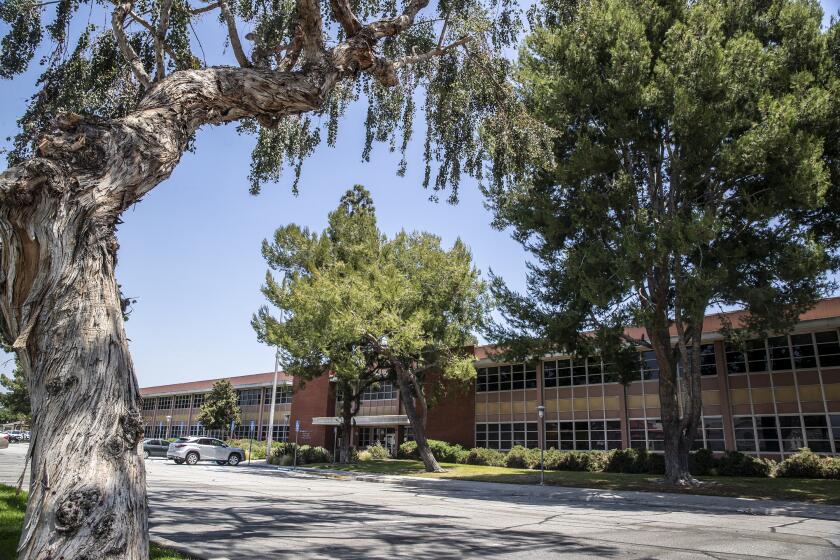Yosemite burn that went awry probed
- Share via
A National Park Service investigation team is sifting through the blackened hillsides and ash left by Yosemite’s 7,500-acre Big Meadow fire, probing what went wrong two weeks ago when a planned burn escaped control lines and prompted the evacuation of the small community of Foresta.
The investigators will conduct a forensic review of the fire that ran out of control Aug. 26 after embers ignited timber and chaparral surrounding the 90-acre grassy meadow being burned by park officials. The blaze eventually required more than 1,300 personnel and $15 million to contain, making it the second most expensive firefighting effort this season on public lands nationwide.
The situation has embarrassed Yosemite officials, whose management of one of the crown jewels of the park system is habitually under scrutiny. Tall columns of smoke were visible from the heavily visited Yosemite Valley, and flames forced road closures during the busy summer season.
The “prescribed” fire escaped its intended boundaries on the same day that a series of rock falls from the Royal Arches formation closed the swanky Ahwahnee Hotel for two days.
The park’s acting superintendent defended Yosemite’s fire team as “the best in the business.”
“I take full responsibility,” said Dave Uberuaga, who faced criticism from businesses in gateway communities that lost tourist trade because of road closures. “I have apologized to the communities. I regret that we had to evacuate them. And I regret the situation we find ourselves in. Still, prescribed fire is a necessary tool in the park.”
Controlled fires, a common tool for park service fire managers, are used only when wind, humidity, temperature and air quality meet certain safety requirements. Yosemite’s fire staff set a 60-acre prescribed fire near the community of El Portal in July to no ill effect. Park staff have set off 59 prescribed fires since 2000, officials said, burning 10,000 acres.
Prescribed burns have been used on public lands in Southern California, scene of the Station fire that has burned nearly 170,000 acres, but their use is limited by air-quality concerns, the region’s notoriously dry weather and variable winds, and its high population density. Last year, the U.S. Forest Service used prescribed burns on 54,128 acres of national forests statewide, including 1,613 acres in the Angeles, 3,660 in the Cleveland, 1,282 in the Los Padres and 3,102 in the San Bernardino national forests.
The Big Meadow controlled burn was intended to remove fuels and lessen the wildfire threat to Foresta, near El Portal on the park’s western border with the Stanislaus National Forest.
Despite the presence of more than 50 park personnel, three engines, water tenders and Yosemite’s firefighting helicopter, embers from a one-acre test burn lofted into the surrounding tinder-dry vegetation, igniting it. Additional park service fire teams rushed to the site, but were no match for shifting winds and spot fires that erupted in downed trees and chaparral.
“As soon as the sun started going down, the wind shifted down-slope and the fire blew back to Foresta,” said Deron Mills, Yosemite’s deputy fire management officer, who arrived at the scene 40 minutes after the fire escaped. “The embers got close.”
No structures were burned in Foresta, and the fire never threatened the Yosemite Valley, where the majority of tourists spend their time.
Uberuaga acknowledged criticism from business owners and communities affected by the road closures, but said the Big Meadow “prescription” was sound. And he added that the fire ultimately may have done some good.
“It’s been a slow-moving, low-burning fire that has been creeping around, burning a lot of fuels that need to burn,” he said. “It’s been rolling through the trees, staying low. It’s actually a perfect example of what a controlled fire would do.”
The fire review team assembled in the park Wednesday and will begin its investigation today.
The Big Meadow escaped fire is the park service’s worst since a prescribed burn at Bandelier National Monument in May 2000 raced through Los Alamos, N.M., destroying or damaging 439 homes, 48,000 acres and 37 million trees.
--
Times staff writer Bettina Boxall contributed to this report.
More to Read
Sign up for Essential California
The most important California stories and recommendations in your inbox every morning.
You may occasionally receive promotional content from the Los Angeles Times.











